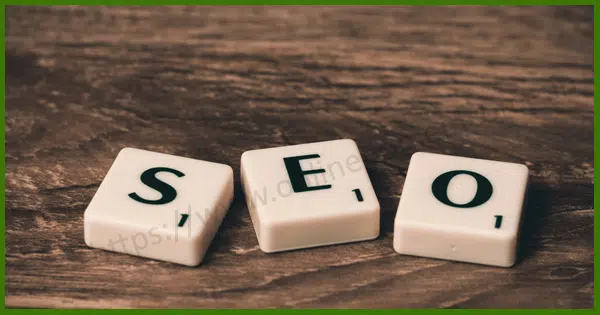How to Start Ecommerce Business – step by step Full Details .
Do you want to start a new business? Initiating an e-commerce company seems overwhelming and stressful. So, learn these procedures to make it easier.
Most of the different kinds of businesses being done these days include e-commerce. Like any other business, learning how to start an e-commerce business is also somewhat strategic and streamlined.
It starts with proper planning, goal setting, preparation, development, and launching of an online store. Further extensions include monitoring the outcomes and tweaking necessary areas.
E-commerce businesses these days have become instant, as many people started shopping online. It saves a lot of money for the consumers in many aspects.
Therefore, if you are planning to start a business this year, I strongly recommend Ecommerce Business. After all, you need to construct a brick-and-mortar store.
Instead, you can carry out similar operations with the help of only one online shopping portal, which is called a website. Going online offers more flexibility, being affordable, and opens up new opportunities.
So, in this article, I will be explaining how to start an e-commerce business with clearly explained procedures and steps.
Why Start an Ecommerce Business this year?
E-commerce is growing, with sales projected to reach $5,695 billion by 2022. As such, most people are searching for new business ideas, and one may ask how to learn about starting an e-commerce business today.
The big goal here is to build a workable business that will continue to stand the test of time and enjoy growth. Choose a creative name that sounds and rings in the ears of those around for your company to stand out among the competition.
We are going to explain, in this article, the steps involved in starting an e-commerce business, adding the trending business ideas to consider. Here goes!
1. Finding and Choosing the Right Product/Service
Finding your niche for a product or service to sell means choosing the profitable and sustainable ones, especially if this is your first e-commerce business.
Choosing the right product to sell can be a challenging task but is definitely not impossible. With little effort, selling the right product or service makes the process of business more manageable.
Your brand allows a steady stream of income generation and opening of opportunities in the long run. Therefore, choose what you can enjoy, scale up to a great size, and target the right audience.
Besides sustainability, you must align your product or service with personal experience and pain areas.
The USP is usually the solving of certain pain points. Consider what type of goods one intends to sell, whether this be physical or digital, and what the production process looks like?
2. Conduct a Small Market Research
Market research gains business-related insights such as market conditions, audience buying power, your competitors, and pricing system.
Insights from market research act as guidelines to set long-lasting marketing and sales strategies.
It also tells you why the audience will buy your product. The best outcome of the research is to get actionable steps that you can apply throughout the business processes.
For that, research the current and future growth of the industry. Browse results at Google: Use the keywords about your industry and read all sources you can.
Your research insights should be able to answer questions like:
- What is the current statistics and trend about your business?
- Who's the competition and where are they?
- List their weaknesses to give you new opportunities
- How would the consumer behave in your niche look?
- What does the user journey look like?
- How does the return policy look?
- What are the terms and conditions going to be?
Learn from existing online groups or communities to understand the audience. Read online research or pay to services like Google Surveys to help with data.
Preparing all these insights paves an easier way to fulfill the next steps.
3. Write a Detailed Business Plan
Basically, it includes a description of the short and long-term goals, strategies, objectives, and growth expectations. It helps guide you and sell your business to customers, investors, and partners.
In other words, it is the best means to understand and know the company and its future direction. Consider the process as setting ground rules and a foundation for future decisions.
So, prepare the business plan with the basic information, all covered in an executive summary. Highlight your USP, goals, and how you will satisfy the products.
Add marketing and sales strategies, such as how you will promote the products and how you will price them. Then, add financial details with the income system, budget allocation, and capital expenditure.
Prepare a plan with the proper business plan template and clear formatting for readability.
4. Find Suppliers and Partners
Choosing your supplier or partner is very important to provide the best products to the customers and automate work processes.
Therefore, pay close attention to their reputation before deciding to work together and solve problems. Also, define how much work needs third-party suppliers.
There are two ways to find suppliers or partners.
- The first one is through signing up on platforms like Alibaba or Redbubble to handle the production and distribution processes.
- The second is by sourcing local suppliers for packaging and shipment aid.
In the case of going to the second option, start off with online or referral-based options.
Contact the potential ones, understand how they work, and check their reputation.
Make the business partnerships available to them either in the short term or long term and see where that fits into your budget.
5. Register Your E-commerce Business
The legal aspect of securing your online business is daunting and complex, but yet it's important.
You will achieve licensing and branding rights with a registered business, minimize tax liability, add credibility to customers, and avoid any conflicts with partners.
You first of all have to figure out what kind of structure the business is: will you run the business as an owner, run it with a partner, or turn it into a corporation?.
Also, consider if you're planning to hire in the long term. Second, register your business name. Third, registration must be done with the local tax authorities, including license and permits.
If running the business from home, a home occupation permit must be attained. Above all, for a better registration process, check with the local legal office. A business bank account opens one up to easier and safer transactions.
6. Pick an E-Commerce Platform
Your e-commerce will be composed of a lot of activities: from product search and purchase to payments. Hence, it's great to find a capable and scalable one.
The right platform also enhances sales conversion, builds customer relations, and saves you from long-term hassles. Consider how fast you plan to grow and your budget for maintaining the platform.
Match your objectives with it. Select a user-friendly platform; one good option might be WordPress due to its numerous e-commerce plugins.
Apart from the e-commerce activities, consider the features and prices for maintaining and upgrading the platform.
Make sure it is scalable and can take the burst load if it occurs suddenly. Also, make sure your chosen platform is SEO-friendly as that will help boost your online store.
7. Choose the Right Domain Name
It is more of a long-term investment in identifying the domain name of your business website. This is typically the first thing people learn about the business, and this helps in page ranking as it makes the website SEO-friendly.
That is the reason why the selection of the right domain name is a very crucial step. In order to give a boost to branding and SEO with the domain name, either use relevant keywords or brandable names.
Keep it brief and use simple letters for easy pronunciation. And above all, your name must clearly state what you sell. Prepare alternative names, in case the domain name is taken.
Verify the WHOIS history in case the domain has a previous owner or not. Also, pay close attention to your domain structure:.
Use subfolders instead of sub-domains, since Google reads subfolders as part of a website instead of a new one-so increasing overall site authority.
Examples of subfolders are "www.companyname.com/blog" while sub-domains are "blog.companyname.com".
By opting for subfolders, you're one step ahead in creating an efficient site structuring, which we will cover in step number ten.
8. Customize Your Online Store
When your website is up and running, it is time for customization. This makes your online store different from that of the competitors and makes the website truly yours.
Besides that, customization of the website improves efficiency by leveraging good website design.
This customization will range in the UI/design, UX, and general functionality.
To do so, always customize, based on your brand's personality. Add creation strategy to keep the best of the elements on the website. Apply UI and UX designs.
Focus on the 4Ps of marketing: product, price, place, and promotion. Doing so, it boosts your content creation skill and increases ROI.
Furthermore, it caters to the needs of the customer. Match them based on their purchasing experience online and apply the same to your website.
If you are on a site builder, then you can make use of the e-commerce themes. Once the customization is up and running, test their journey page by page.
Remember to set up payment gateways for your customers. The most popular is PayPal, but you could use accounts for bank transfers in the early phase of your online store.
9. Upload Your Products and Content
Start uploading and adding product list and content on the website. Use bulk upload feature using Excel or CSV file.
Add SEO elements through content marketing to product and content. While uploading products always add relevant keywords to product title, description and tags.
Use high resolution images, add alt text to them and compress image sizes so the page loads fast.
Also make sure to categorize products correctly so search engines can have a better idea of page indexing.
Make a list of each element on the page, starting from logo, headers and buttons, like:
- Is the link working?
- How fast does the page load?
- Is the landing page complete?
- Does the sign up page work?
10. Improve Your Ecommerce Website SEO
Now that the website has everything on it, it's time to start working on the improvement of website SEO. Since SEO is made up of many strategies, you could start focusing on e-commerce SEO.
As the name goes, all the SEO efforts are to drive traffic to your online store and product pages. This e-commerce SEO includes keyword research, site architecture improvement, link building, local SEO, and technical SEO.
These practices help you gain organic traffic toward your website and higher rankings on the SERPs.
One page at a time, start critiquing and then work your way through what you can improve upon. Add a meta description to each page, optimize your link-building strategies.
Use head keywords and long-tail in each page for them to become first-page SERP potential. Consider web accessibility: make sure everyone, including people with disabilities, can use your site with ease.
Adding it benefits SEO and the users of mobile, too. That means that's a great way to implement SEO into the website.
How you structure your URL does matter. Stick with popular top-level domains, such as .com, whenever possible.
It means that your URL should provide some information about the page content. Some tools to be used for SEO check are Seobility.
11. Publish the Website and Promote Online
Only publish the website when everything is ready. Give it to some trusted people or even potential customers for feedback.
Go through each page and make sure all is optimized as it should be. The next important thing to do after publishing is to promote the website. The quickest way to do that is to create a social media account.
Promote using the right business tools: teasers, links to your website, and start engaging with customers.
If budgeting is not an issue, then market with Google Ads to improve reach. From this, you will get more leads, brand credibility, and be able to maintain steady site traffic.
Also, do more promotion through newsletter marketing. Newsletters sent out build up relationships and are an excellent method of promotion for product updates, announcements, or any other information related to the product.
Apply soft-selling methods whenever possible to keep the interests longer. In the long run, start collaborating with influencers or potential brand partners for efficient marketing.
With more partnerships, your brand will be able to develop a better reputation, with more trust from customers who are already present, and will open up avenues of growth.
Alternatively, you can list in Google My Business and invest in a great FAQ page to help improve page ranking. These are just free ways of promoting your business.
12. Track and Tweak
This would be your last step, which is tracking the performance of your website and tweaking it for improvements. In this way, it's smart to keep on growing and to avoid problems on your website.
Choose and settle with your KPI for better tracking and tweaking.
Tracking Website performance requires the right tool that will cover all the essential data to understand what works and what doesn't?
For tracking key metrics, use Google Analytics to understand click-through rates, averages of time spent on-page, and bounce rate. With regard to tweaking, understand the purpose behind it.
Valid purposes are in gaining more customers, clarity of content, and effectiveness of marketing. Use such tools that can integrate with your e-commerce platform for easy tweaking.
Also, optimize your website for mobile users; that way, you are optimizing the whole website by using a mobile-first approach.
Also remember, all the changes you are doing should not affect the customer while shopping.
Top Trending Products and Services to Sell in 2021
Considering the changing time and market demand due to COVID-19, health and wellness-related trending products and services top the rank.
However, retail, home, and personal care, and hobbies or crafts are quite convenient to stay because of the working-from-home conditions.
You can take opportunities from this by choosing one of the sustainable and always in-demand products.
Also, it's important to choose those which would match your personal interests and solve some problems. Among all other factors, customers prefer genuine products with real benefits.
Following are a few trending product and service examples for you to consider in 2021:
Health and well-being products
This includes face masks, hand sanitizers, disinfectant spray, and daily vitamins.
However, always consult with your partner when selling health-based products.
For face masks, try a DIY design to differ from your competition.
Clothing
Other than regular daily wear, the trending options include loungewear and sportswear.
Give them good quality products to last long to develop brand loyalty.
Beauty Products
This includes skincare, hair scrunchies, mask straps, and makeup products.
Consider natural or eco-friendly skincare products as this is a part of skincare trends in 2021
Lifestyle
Some of the popular products are water bottles, pet care products, yoga mats, plants, and travel accessories.
For lifestyle products, consider sustainable and environmental-friendly as these cater to the market demand.
Entertainment
Consider selling board games, kids toys, hobby-based and craft products like cross stitching, woodwork, and home decor.
These support the stay-at-home families during the pandemic.
Home Office Essentials
With working from home, people have been able to set a home office. The desk chair to sell will be complemented by seat cushions and blue light glasses.
However, consider the materials or distribution to avoid making the wrong investments.
To find and sell the perfect product, make use of Google Trends, the marketplace's featured page, YouTube trending videos, or social media hashtags to get an understanding of what's popular. However, it's still important to understand the difference between "trend" and "fad" for your business to flourish.
Conclusion
Starting an e-commerce business is encouraged for individuals looking to earn extra income and help others through products solving problems and pain points.
Also, keep in mind that selecting the right product or service is a guaranty for the success of your business.
Besides, establish strategies in the short and long run.
Now, having followed the twelve steps we have covered in the article, you are ready to start an e-commerce business, including:
- Choose a product or service to sell
- Market research
- Write a business plan
- Finding suppliers and partners
- Registration
- Choose e-commerce platform
- The right domain name
- Customization of your online store
- Products and content upload
- Website SEO Improvement
- Publish and promote
- Track and tweak
Read through and implement each one of them for your online store. If you are concerned about budget or resources, that is absolutely okay. You start small.
Work in local markets and gradually scale up. Good luck!
ALL COPYRIGHT BELONGS TO
https://www.onlinehomeincome.in/how-to-start-ecommerce-business.php














